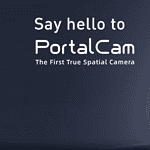

The production of 360° videos requires special techniques and equipment to create a more immersive experience for the viewer. Here is some information about 360° video production:
In the past, 360° videos were often shot with GoPros, as these cameras were lightweight and compact and could be easily combined into complex arrays of up to 18 cameras for mounting 360° rigs as they were called. However, they also had technical limitations, such as limited resolution and image quality. Furthermore, one can vividly imagine what a nightmare it is to manage many gopros, which sometimes got too hot in the middle of the shoot, rendering the shot unusable. However, with the development of specialized 360° cameras, the situation has improved and today there are a variety of options of 360° cameras in all price ranges to produce 360° videos.
Panoramic 360° images are created by stitching together several individual images to create a seamless overall image. To do this, the camera is placed either on a special tripod or a turntable that automatically rotates the camera 360° while it takes several photos. The images are then stitched together in special software to create a panoramic image that provides a seamless 360° view. There are also special cameras that can directly capture a 360° image without the need to manually stitch individual images together. These cameras have several lenses that capture images simultaneously and stitch them together automatically. Viewing these 360° images with virtual reality glasses enhances the feeling of immersion and allows the user to experience the scene from different perspectives.
Overview of the most popular 360° cameras on the market. The overview shows both professional cameras and action 360° cameras that are also used by hobbyists. As a rule, all stereoscopic cameras are significantly more expensive and fall into the professional equipment category. 360° cameras do not age well, so 4-year-old equipment is usually already outdated.
A 360-degree camera captures images and videos that cover the entire environment around the camera. To achieve this, many images must be captured from different angles and then stitched together to create a 360-degree image or video. A camera with multiple lenses can capture more images simultaneously, speeding up the capture process. In addition, multiple lenses can help improve what's called the "stitching" process, where individual images are stitched together to create a seamless 360-degree image. The more lenses a 360-degree camera has, the better it can usually capture the entire environment and the higher the quality of the resulting 360-degree image or video.
Stereoscopic means that the 360° camera has lenses that are positioned to function like human eyes and can produce a stereoscopic image. Stereoscopic 360-degree cameras therefore capture not only a full 360-degree view, but also three-dimensional depth. This allows the viewer to look around the virtual environment and have a more immersive experience, as the depth perception enhances the illusion of a real environment. Stereoscopic 360-degree shots are particularly useful for virtual reality applications where the viewer should have the feeling of actually being in the virtual environment. In this context, it should be noted that the stereoscopic experience is much more natural for cameras with more than 6 lenses.
Resolution is especially important with 360-degree cameras because these cameras capture a very large area and thus require a higher resolution to produce a sharp and detailed image than regular cameras. Low resolution results in blurry and pixelated images, which detracts from the viewing experience.
This is especially important when viewing 360° content in a headset.
When viewing a 360-degree image, one has the option to view the scene from different perspectives by zooming in or rotating the view. Higher resolution allows the viewer to see finer details and have a better viewing experience.
That's why it's important to look for high resolution when choosing a 360-degree camera. The higher the resolution, the sharper and more detailed the resulting images or videos. Currently, no all-in-one 360° camera is able to emulate the resolution of the human eye. Furthermore, only headsets from Vaio for about 4000€ is able to show approximately the resolution of the human eye. This means that 360° video is unfortunately not yet as sharp as in real life.
Stitching refers to the process of processing individual images or videos captured by different cameras to create a seamless 360° panoramic image or video. Stitching uses specialized software to combine the various individual images or videos so that together they form a single, continuous image or video that can be viewed in all directions. Stitching is an important step in the creation of 360° video because it combines the different perspectives captured by the cameras into a single, seamless image. There are different types of stitching techniques that can be used to create 360° videos, such as optical flow stitching, spherical stitching and more. There are many software products on the market that support 360° video stitching Mistika VR, PTGui, Hugin. Furthermore, the manufacturers of the 360° cameras such as Insta 360, Kandao and Ricoh Stitching software solutions offered that can achieve quite good results.
Design4real is a professional 360-degree video agency that specializes in creating stunning 360-degree videos. We have an experienced team of experts who will assist you from the conception to the completion of your 360-degree film.
Why should you hire Design4real for your 360-degree film production? Here are some reasons:
Contact us today and together we will find out which solution is right for you!
| Camera model | Price | Image resolution | Stereoscopic? | Number of lenses | Year of publication | Professional/Prosumer |
|---|---|---|---|---|---|---|
| Insta360 Titanium | 16.990€ | 11K (360°) | Yes | 6 lenses | 2020 | Professional |
| Insta360 Pro2 | 4.999,00€ | 8K (360°) | Yes | 6 lenses | 2018 | Professional |
| Kandao Obsidian S | 5.999,00€ | 8K (360°) | Yes | 6 lenses | 2017 | Professional |
| Insta360 Pro | 2.999,00€ | 7K (360°) | no | 4 lenses | 2017 | Prosumer |
| ZCam V1 | 3.999,00€ | 8K (360°) | Yes | 6 lenses | 2017 | Prosumer |
| Insta360 ONE R | 429,00 € | 5.7K (360°) | No | 2 lenses | 2020 | Prosumer |
| Insta360 ONE X2 | 429,00 € | 5.7K (360°) | No | 2 lenses | 2020 | Prosumer |
| GoPro MAX | 499,99 € | 5.6K (360°) | No | 2 lenses | 2019 | Prosumer |
| Kandao QooCam 8K | 499,00 € | 8K (360°) | Yes | 2 lenses | 2019 | Professional |
| Ricoh Theta Z1 | 999,00 € | 7K (360°) | No | 2 lenses | 2019 | Professional |

Are you interested in developing a virtual reality or 360° application? You may still have questions about budget and implementation. Feel free to contact me.
I am looking forward to you
Clarence Dadson CEO Design4real






